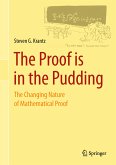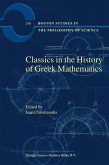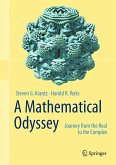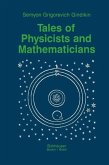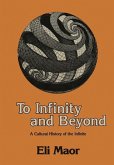Accessible and comprehensive, this guide is an indispensable tool for anyone in the sciences - new and established researchers, students and scientists - looking either to refresh their math skills or to prepare for the broad range of math, statistical and data-related challenges they are likely to encounter in their work or studies.
In addition to helping scientists improve their knowledge of key mathematical concepts, this unique book will help readers:
· Read mathematical symbols
· Understand formulas, data or statistical information
· Determine medication equivalents
· Analyze neuroimaging data
Mathematical concepts are presented alongside illustrative and useful real-world scientific examples and are further clarified through practical pen-and-paper exercises. Whether you are a student encountering high-level mathematics in your research or a seasoned scientist looking to refresh or strengthen your understanding, Math for Scientists: Refreshing the Essentials will be the book you reach for again and again.
In this new edition, two new chapters covering statistics and differential equations have been added, which have been workshopped in the 'authors' popular lecture series in order to maximize the benefit for readers.
Hinweis: Dieser Artikel kann nur an eine deutsche Lieferadresse ausgeliefert werden.
In addition to helping scientists improve their knowledge of key mathematical concepts, this unique book will help readers:
· Read mathematical symbols
· Understand formulas, data or statistical information
· Determine medication equivalents
· Analyze neuroimaging data
Mathematical concepts are presented alongside illustrative and useful real-world scientific examples and are further clarified through practical pen-and-paper exercises. Whether you are a student encountering high-level mathematics in your research or a seasoned scientist looking to refresh or strengthen your understanding, Math for Scientists: Refreshing the Essentials will be the book you reach for again and again.
In this new edition, two new chapters covering statistics and differential equations have been added, which have been workshopped in the 'authors' popular lecture series in order to maximize the benefit for readers.
Dieser Download kann aus rechtlichen Gründen nur mit Rechnungsadresse in A, B, BG, CY, CZ, D, DK, EW, E, FIN, F, GR, HR, H, IRL, I, LT, L, LR, M, NL, PL, P, R, S, SLO, SK ausgeliefert werden.
Hinweis: Dieser Artikel kann nur an eine deutsche Lieferadresse ausgeliefert werden.
Es gelten unsere Allgemeinen Geschäftsbedingungen: www.buecher.de/agb
Impressum
www.buecher.de ist ein Internetauftritt der buecher.de internetstores GmbH
Geschäftsführung: Monica Sawhney | Roland Kölbl | Günter Hilger
Sitz der Gesellschaft: Batheyer Straße 115 - 117, 58099 Hagen
Postanschrift: Bürgermeister-Wegele-Str. 12, 86167 Augsburg
Amtsgericht Hagen HRB 13257
Steuernummer: 321/5800/1497
USt-IdNr: DE450055826
Bitte wählen Sie Ihr Anliegen aus.
Rechnungen
Retourenschein anfordern
Bestellstatus
Storno



